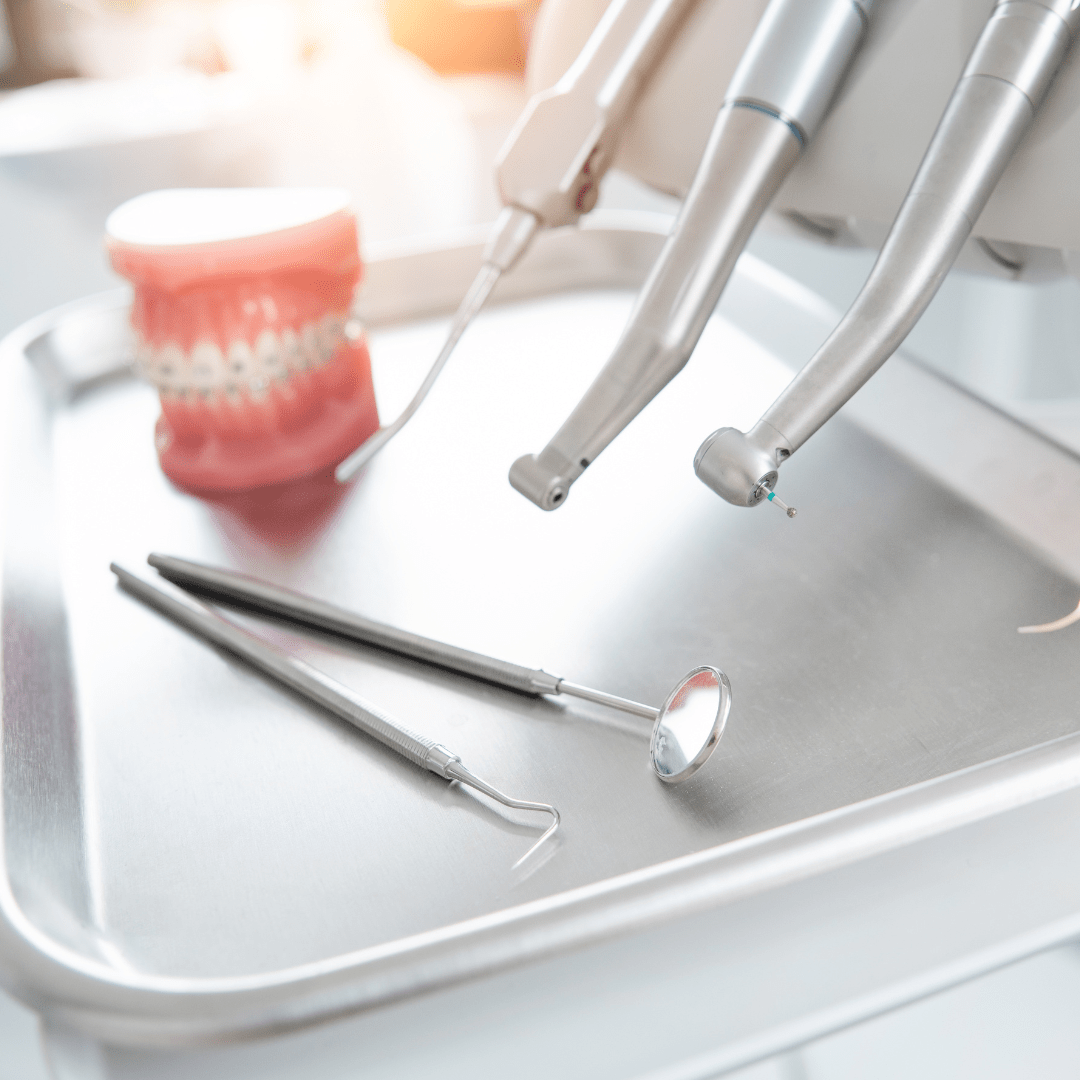A Dental Doctor's Essential Toolkit
A Dental Doctor's Essential Toolkit
Types of Dental Surgical Instruments
1. Cutting and Dissecting Instruments
Scalpels, surgical scissors, and dental saws make precise incisions and cut through soft and hard tissues.
2. Grasping and Holding Instruments
Forceps, needle holders, and clamps are designed for holding or manipulating tissues during surgical procedures, allowing the dentist to maintain control with minimal trauma.
3. Retracting and Exposing Instruments
Retractors hold tissues, providing a clearer view and access to the treated area, ensuring precision in delicate operations.
4. Suturing and Stapling Instruments
Needles, sutures, and staplers close incisions and wounds, facilitating proper healing and reducing the risk of complications.
5. Suctioning and Aspirating Instruments
These devices remove excess fluids, such as blood or saliva, from the surgical area, keeping it clean and ensuring an unobstructed view of the operating site.
How Dental Doctors Use Surgical Instruments
Dental instruments are essential in various dental surgeries, including:
• Tooth Extraction
Forceps and elevators are employed to loosen and remove teeth with minimal discomfort.
• Biopsies
Scalpels and biopsy punches help obtain small tissue samples for pathological examination.
• Dental Implants
Dental drills and precision placement tools are used to securely insert dental implants into the jawbone.
• Gum Surgery
Curettes and scalers treat gum disease, removing plaque and infected tissue to promote healing.
• Oral Pathology
Various tools assist in diagnosing and surgically treating oral diseases and abnormalities.

Benefits of Using Surgical Instruments
• Precision
These tools are engineered for precision, ensuring delicate procedures are performed with minimal trauma.
• Safety
When used properly, surgical instruments minimize risks such as infection or tissue damage.
• Efficiency
High-quality instruments streamline dental surgeries, reducing patient discomfort and shortening recovery time.
• Technological Advancements
Many of today’s surgical instruments are crafted from premium materials and incorporate ergonomic features for comfort and enhanced performance.
Traditional Instruments vs. New Technologies
Traditional surgical tools remain foundational, but new technologies are increasingly entering the dental field. For instance, laser surgery allows for precise cutting without physical blades, reducing bleeding and promoting faster recovery. Similarly, CAD/CAM technology and 3D printing are revolutionizing dental implant placement with custom-made surgical guides that enhance accuracy and ease.
Why Dental Doctors Still Rely on Surgical Instruments
Despite the availability of cutting-edge technologies, many dental doctors continue to prioritize traditional surgical instruments due to their:
• Versatility
These tools can be employed across a wide variety of dental surgeries.
• Reliability
Instruments such as forceps and scalpels have a proven track record of safety, durability, and effectiveness.
• Accessibility
Compared to high-tech alternatives, traditional surgical tools are more cost-effective and widely available, making them practical for routine procedures.
Conclusion
Surgical instruments remain the cornerstone of modern dentistry. Whether performing extractions, biopsies, or implants, dental professionals rely on these precision tools to deliver safe, effective treatments. While new technologies are enhancing the capabilities of dental procedures, the essential role of traditional surgical instruments continues to ensure the best care for patients. Understanding these tools helps patients appreciate the skills
-
Dental Oral Surgery and Bone Graft Instruments Set
$500.00Original price was: $500.00.$399.00Current price is: $399.00. -
Hygiene Cleaning Kit – CS02 Dental Tartar Scraper Remover Set
$39.95Original price was: $39.95.$29.95Current price is: $29.95. -
Pascal R55 Cord Packer | Dental Cord Packer | Endodontic Cord Packer | Serrated Cord Packer
$19.95Original price was: $19.95.$15.95Current price is: $15.95.







